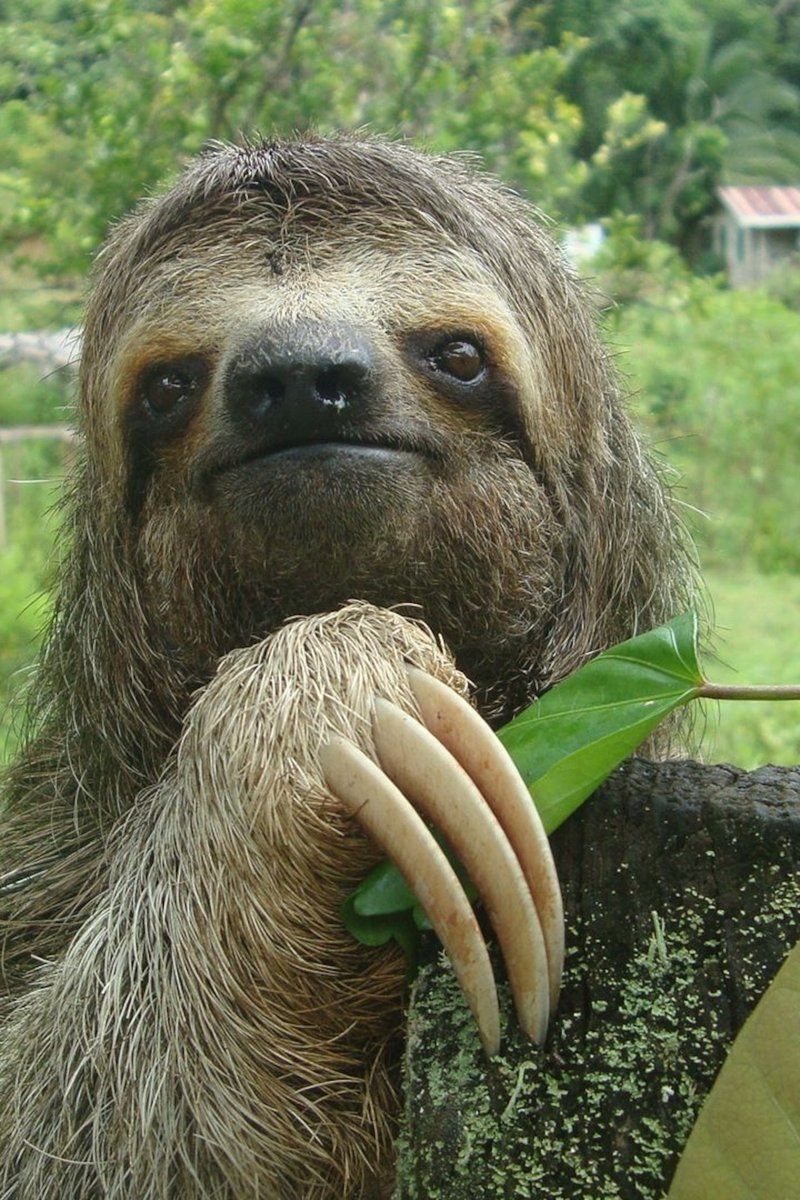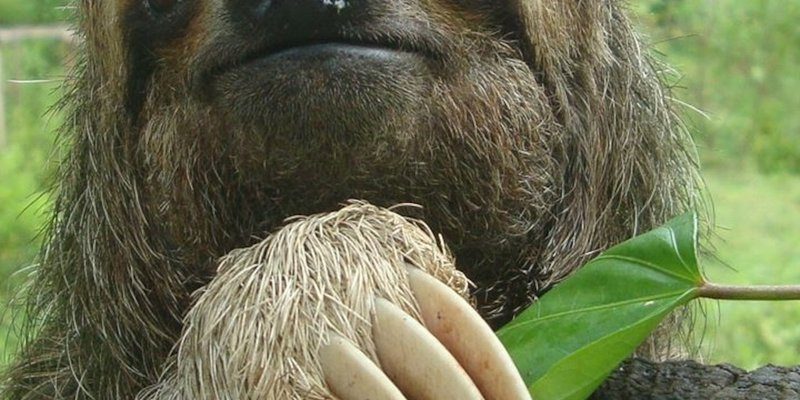
What Makes the Three-Toed Sloth Unique?
The three-toed sloth is part of a group of mammals known as xenarthrans, which also includes armadillos and anteaters. Unlike their two-toed cousins, these sloths have three long claws on each foot, which they use to hang onto tree branches. Their slow movements are not just a quirky trait; they actually help them avoid detection by predators. Think of it as an ancient survival tactic!
Sloths are also known for their incredible adaptations. For example, their digestive systems are uniquely slow, with food taking up to a month to pass through! This slow metabolism means they need a low-energy diet, primarily consisting of leaves. The leaves provide them with minimal nutrients, which is why sloths are often found sleeping for up to 20 hours a day. It’s like they’ve mastered the art of chilling out!
The Habitat of Three-Toed Sloths
Three-toed sloths inhabit the tropical rainforests of Central and South America. They thrive in canopy layers, where they can find plenty of leaves to munch on. The forests provide shelter, food, and safety from most ground predators. Think of the canopy as a high-rise building for sloths, where they can roam freely and leisurely dine on their leafy meals.
However, their habitat is shrinking. Deforestation is a major threat, as logging and agricultural expansion clear vast areas of rainforest. When these trees disappear, so does the sloth’s home. Without trees, sloths may struggle to find food and mates, making them even more vulnerable. This is a clear example of how human activity can have a cascading effect on wildlife.
Current Threats to Three-Toed Sloths
Regrettably, the three-toed sloth faces numerous threats, many of which stem from human actions. Here’s a closer look at the biggest challenges:
- Deforestation: As mentioned, this is one of the sloth’s biggest enemies. The removal of trees disrupts their habitat and food source.
- Climate Change: Changes in climate can alter the habitats that sloths rely on, affecting food availability and survival rates.
- Poaching and Illegal Trade: Though not as common, sloths can fall victim to illegal wildlife trade, sold as exotic pets or for other purposes.
Despite their slow pace, three-toed sloths are caught in a fast-paced world filled with threats. It’s a harsh reality, but understanding these challenges is the first step toward finding solutions.
Are Three-Toed Sloths Endangered?
The three-toed sloth isn’t classified as endangered in the same way some species are; however, it faces vulnerability. The IUCN Red List categorizes them as “Least Concern,” but this doesn’t mean they are safe. Their populations are declining in many places due to the factors we discussed.
Here’s the thing: even if they’re not on the endangered list today, that doesn’t mean we shouldn’t be worried. If the trends continue, they could easily move into a more critical status. Conservationists emphasize the need to monitor sloth populations and implement protective measures before it’s too late.
Conservation Efforts for Three-Toed Sloths
Thankfully, there are many people and organizations dedicated to protecting three-toed sloths and their habitats. Here’s what’s being done:
- Habitat Protection: Many conservation groups work to preserve rainforests and create protected areas where sloths can live safely.
- Rehabilitation Programs: Injured or orphaned sloths are taken into care, rehabilitated, and eventually released back into the wild.
- Public Awareness Campaigns: Educating the public about sloths and their ecological importance can foster more support for conservation efforts.
These efforts show that with a little teamwork and determination, we can make a real difference. It’s not just about saving sloths—it’s about preserving the entire ecosystem that supports them.
What Can You Do to Help?
You might be wondering, “How can I help with all this?” There are plenty of ways you can get involved or support conservation efforts for three-toed sloths:
- Support Conservation Organizations: Look for nonprofits that work specifically to protect sloths and their habitats, and consider donating or volunteering.
- Spread the Word: Share what you’ve learned about three-toed sloths on social media or in conversations. Awareness is key!
- Adopt Sustainable Practices: Making eco-friendly choices, like using less paper and reducing your carbon footprint, can help protect rainforests.
Every little action counts. By getting involved, you can be a part of the solution and help ensure that future generations get to meet these fascinating creatures.
So, is the three-toed sloth endangered? While they aren’t currently classified as endangered, they do face significant threats that could put their future at risk. Understanding their plight helps us recognize the importance of conservation efforts. By protecting their habitats and supporting initiatives dedicated to their well-being, we can ensure that these charming creatures continue to thrive in their lush rainforest homes.
Remember, it’s all about balance—between humans and nature. Working together, we can help save the three-toed sloth and the irreplaceable ecosystems they represent. So let’s keep our fingers crossed for these unique animals and do our part to protect them!

